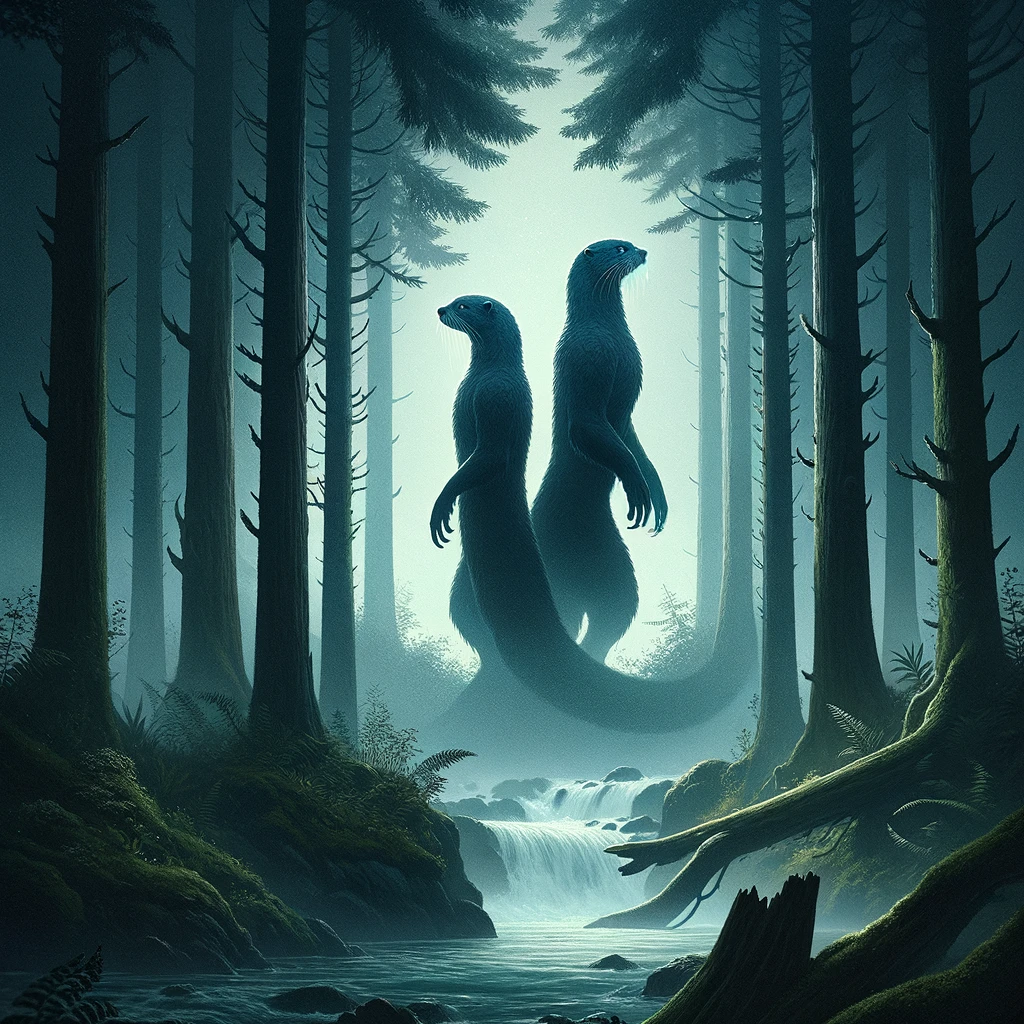Nestled within the rich tapestry of Alaskan folklore lies the enigmatic and somewhat eerie figure of the Kushtaka or Kooshdakhaa. These shape-shifting beings, rooted deeply in the lore of the Tlingit and other indigenous peoples of the Pacific Northwest, embody a fascinating blend of cultural storytelling, supernatural beliefs, and the profound mysteries of the natural world.
Origins and Mythology
The Kushtaka, which roughly translates to “land otter man” in the Tlingit language, occupies a unique place in the pantheon of North American cryptids. Unlike the purely malevolent creatures of Western myth, the Kushtaka can be both benign and malevolent, depending on the narrative. These beings are said to possess the supernatural ability to transform from otters into humans, or into any semblance in between, allowing them to traverse both the aquatic and terrestrial realms with ease.
The Dual Nature
One of the most captivating aspects of the Kushtaka is its dual nature. In some tales, they are protectors of the lost, guiding stranded or injured individuals to safety with their intimate knowledge of the wilderness. However, in darker stories, they are malevolent tricksters, mimicking the cries of babies or the screams of women to lure unsuspecting victims into the forest or to the river’s edge, only to turn them into Kushtaka or kill them.
Cultural Significance
The stories of the Kushtaka serve multiple purposes within the cultures that cherish them. They are cautionary tales, teaching respect for the often-dangerous wilderness that surrounds these communities, as well as the importance of community and staying safe within familiar territories. Additionally, these narratives encapsulate a profound connection to the environment, highlighting the belief in a world where humans are not dominant but are part of a complex web of life, with the Kushtaka acting as a bridge between the human and animal worlds.
Modern Interest and Skepticism
In the contemporary era, interest in the Kushtaka has extended beyond its cultural origins, captivating cryptid enthusiasts and paranormal researchers worldwide. This fascination is fueled by numerous reported sightings and encounters, often described with a mixture of awe and fear. Skeptics, however, attribute these stories to the misidentification of local wildlife, the profound impact of isolation in the Alaskan wilderness, or as purely folkloric or psychological phenomena.

The Kushtaka or Kooshdakhaa remains one of the most intriguing and multifaceted elements of Alaskan and indigenous folklore. Whether viewed through the lens of cultural heritage, psychological archetypes, or as a tantalizing cryptid mystery, the Kushtaka embodies the deep interconnection between humans and the natural world, the thin veil between reality and the supernatural, and the enduring power of storytelling to navigate the complexities of human existence. As our world continues to change, the tales of the Kushtaka remind us of the mysteries that persist in the wild places and the shadows that dance just beyond the edge of the firelight.
